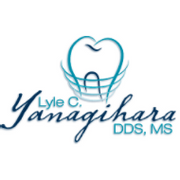
Extraction involves the removal of a problematic tooth, often as a result of impaction, severe damage, or extensive decay. An oral surgeon can perform the procedure by gently loosening the tooth, making incisions into the gums, and lifting it from the socket. While this is done under anesthetics, preparing for a tooth extraction can promote healing and prevent discomfort. Here's what to know about getting ready for your appointment.
4 Ways to Prepare for Tooth Extraction
1. Stop or Start Medications
In the weeks leading up to your procedure, your oral surgeon might recommend that you stop taking blood thinners, as this can minimize bleeding during and after the extraction. They may also suggest temporarily ceasing any medications that might cause gum inflammation and infections, such as blood pressure and immunosuppressive drugs. Additionally, your surgeon might prescribe antibiotics and advise you to start taking them in advance of the procedure to lower the risk of infections.
2. Quit Smoking
Smoking reduces oxygen levels in the bloodstream, which may delay healing following a tooth extraction. This may cause incision sites to remain open following your procedure, increasing the risk of an infection. It can also prevent clotting and lead to the formation of a dry socket, or a hole in the gums that exposes bone and nerves, causing pain and discomfort. Your oral surgeon may recommend that you quit smoking in advance of your procedure to accelerate recovery and avoid complications.
3. Arrange for a Ride

Tooth extraction often necessitates the use of nitrous oxide, or a gas that induces light sedation when inhaled. This can prevent discomfort during the procedure, and patients may drive themselves home afterward. However, your extraction might require taking oral sedatives or inserting an IV that delivers pain relieving medications. Since these methods induce heavier sedation, and the effects take longer to wear off after the procedure, you'll need to arrange for someone to drive you home from your appointment.
4. Understand Aftercare
Keeping the incision site clean is crucial for preventing infections. You may do this by rinsing your mouth with antimicrobial mouthwash a few times daily. You should also plan to eat only soft foods, such as yogurt, applesauce, and eggs, during the first few days after the procedure, as this can prevent pain and discomfort. Avoid drinking or consuming foods through straws, as this may dislodge clots and lead to dry sockets. You can reduce the risk of bleeding by planning to rest for at least two to three days, avoiding strenuous activities such as vigorous exercise and heavy lifting.
If you ever need a problematic tooth removed, turn to Lyle C. Yanagihara, DDS, MS. This oral surgeon provides tooth extraction and wisdom tooth removal to clients throughout Honolulu. Call (808) 973-1433 to schedule a consultation, and visit the website to learn more about how they can keep your smile healthy and gorgeous.
About the Business
Have a question? Ask the experts!
Send your question

